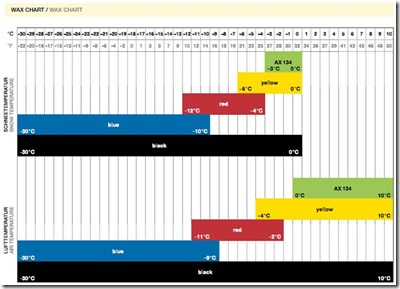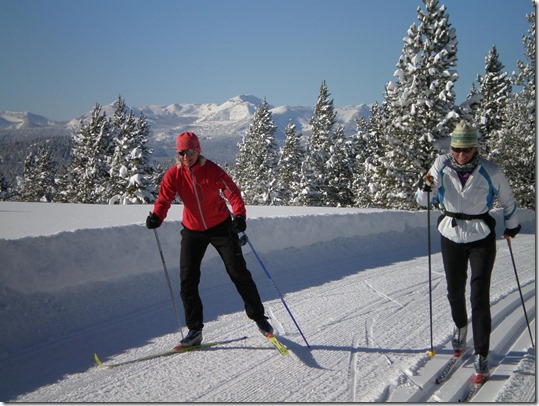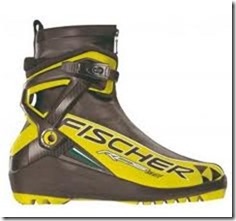Cross Country Skiing
Tuesday, January 1, 2013
by asalvo
The following is an introduction to Cross Country Skiing (XC) as an off season activity for triathletes. I’ll go over a basic explanation of the two styles of cross country skiing, talk a bit about equipment and waxing, and finish up with how I use it for off season training.
The Basics
There are two types of cross country skiing: classic and skate, and both require as much technique and practice as swimming. The classic style is a little easier to “fake” compared to skate style as evident by beginners on classic skis going faster than beginners on skate skis. Poor technique on skate skis will leave you exhausted and left behind in a hurry. However once you learn the basics of skate skiing, you will be much faster then someone on classic skis (of equal or slightly better skill level). Skate skiing requires groomed trails, while classic can be used on groomed (tracked) trails, as well as non-groomed snow (off-piste).
In the image below, you can see a skate skier on the left, while a classic skier is on the right. As you can see, skate skiing gets it’s name from using a (ice) skating motion, while classic uses a more forward and backward motion with the skis parallel. The groomed trail for skate skiing is wide and relatively flat, while for classic skiing, you have a pair of tracks for the skis to move in.
The style you choose for off season training is pretty much a personal preference. You will need to spend a little more time up front learning to skate ski, but you will get your investment back quickly. I like to go fast and liked the way skate skiing looked, so I started with that and have no regrets.
I remember reading somewhere that some runners and bikers prefer classic skiing because it’s forward and back motion will work the same muscles as running and biking, which I would also characterize as a forward and back motion. The other argument, and the one that I subscribe to, is that I’d like to work some different muscles in the off season. In the end you can rest assured that it’s a good workout no matter what style you choose!
Equipment
When comparing equipment choices and cost, cross country skiing is most similar to cycling and can be roughly grouped into beginner, intermediate and advanced levels. Cross country ski equipment as a whole is cheaper then cycling, although when looking at individual pieces of equipment, you still find yourself wondering why does this cost so much. For example, a high end set of race poles going for $300 or more. Since I bought my skate skis two years ago, manufactures are coming out with more and more skies designed for specific snow types and temperatures (which used to be handled solely by your choice of wax).
I picked up a mix of equipment towards then end of the 2010 season which I would classify as a whole at the intermediate level and cost around $500. This level of equipment worked well for a beginner and gives me room to grow if I ever want to do some races. Thankfully a combination of cold weather running and cycling gear can also double as your cross country skiing gear.
I’ve listed my current set of equipment below, which can also serve as a basic list of what is required. Compared to cycling, it’s slightly less (Bike Frame and Components, Wheels, Shoes, Cleats, Helmet).
As I mentioned, you'll also need some cold weather gear. I usually wear my running tights, warm socks, base layer and winter riding jacket, hat and gloves. Wearing a pair of sun glasses is very important during the day due to the reflection of the sun off the snow, and are also useful at anytime of day to keep the wind out of your eyes.
My fingers and toes don’t handle the cold to well no matter what I do before hand. So one trick I use is to go out and do a warm-up lap, then come back inside and let my fingers and toes warm up. Usually they’ll stay warm after this.
Waxing
Waxing is very important when it comes to cross country skiing, especially if you race. There is a science behind choosing your wax and it depends on the temperature of the snow, relative humidity, and the type of snow (new, old, man-made, etc). Here is grid from Eagle River Nordic which lays out the possible combinations. Please visit Eagle River Nordic if you wish to use their wax recommendations.
Similar to the advances made in skis over the last two years, so has there been advances in wax as well. Toko, a well known manufacture of wax and waxing accessories has an all new line-up of wax for 2013. Hopefully this means I can pick up the old stuff on closeout!
Here is a chart from Toko which shows the recommendations for the 2013 wax lineup.

Toko also has an excellent set of resources for waxing, including videos, and written documentation covering basic and advanced waxing and tuning for Nordic (and alpine/downhill) skis.
Training
I use cross country skiing for off season training, and as a substitution for running in my early base sessions. I prefer to substitute running to give me knees a break, and how often depends on how much snow we have. While you can apply the same type of training regiment as you do for triathlon (periodization, intervals, hill repeats, etc), I have not gone to this level yet. I usually just head out for 45-60 minutes and ski around, keeping my heart rate at a desired level. I figure I have 6-9 months of by the book training for triathlon that it’s best to keep things fun when it comes to cross country skiing.
I find that skate style cross country skiing is a great workout for your core (especially on hills) and obviously your legs. As I mentioned above, skate style is going to work a slightly different set of muscles compared to what you will use in running and biking. Depending on the course and how well my technique is, my arms can get a decent workout as well. Although I am coming to realize that if my arms are really sore, it means my technique was most likely bad.
More Information
The Wikipedia article on cross country skiing would be a good follow-up. It covers both styles, gets into the different types of waxes, and starts to explain technique. After that, your favorite search engine can help you find resources in your local area. If you are in the Madison area, I can recommend Fontanna Sports as a good local retailer, and the Madison Nordic Ski Club. Online, I’ve ordered from Eagle River Nordic and New Moon Ski. I’ve also heard good things about The Bike Doctor in Dousman Wisconsin.
I highly recommend taking some lessons no matter which style you choose. The Madison Nordic Ski Club offers free lessons as does The Bike Doctor. I’m willing to bet that you will be able to find free or cheap lessons in your area as well. Besides lessons, I’ve found watching video from races, including the Olympics helps a lot. For me it allows me to visualize what proper technique is supposed to look like.





